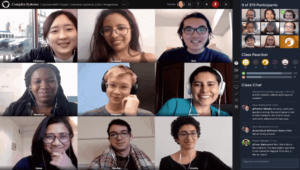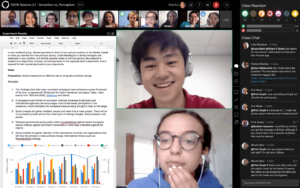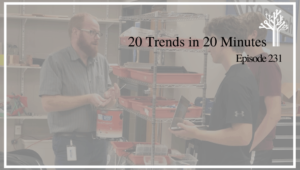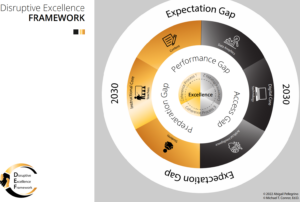Minerva: The Intentional University

As a venture-based Silicon Valley startup, Minerva has developed slowly over the last seven years. As a new form of higher education, progress from concept to enrollment was lightning fast.
In the narrowest sense, Minerva is great new leadership development option for the world’s smartest young people. More broadly, it is a reconceptualization of the ends and means of higher education.
The blueprint is detailed in a new book, Building the Intentional University: Minerva and the Future of Higher Education edited by Chief Academic Officer Stephen M. Kosslyn and CEO Ben Nelson and with a foreword by Senator Bob Kerrey.
At Minerva, now the most selective university in the world, Kosslyn created a focus on active learning, “where every student is expected to be actively involved in every class.” Minerva students build “practical knowledge” aiming at global contribution.
The book is part of an active campaign to challenge higher education to adopt this intentional design or devise something better.
“The literature is crystal clear in showing that students learn best when they have to use the material, not simply sit passively and hear it described,” observed Kosslyn, the former Harvard dean of Social Sciences.
Kosslyn’s graduate training at Stanford focused on the intersection of cognitive psychology and Artificial Intelligence. He is co-author of Cognitive Psychology: Mind and Brain (one of 14 books he’s written or co-authored) and is one of the most respected learning scientists in the world.
Problems to be Solved
Kosslyn and Nelson outline four problems that Minerva addresses:
- Higher education is not fulfilling its promise: students are leaving unprepared for work and life;
- Many college students are unengaged and half don’t graduate;
- Global students don’t have access to first-rate colleges; and
- College is too expensive.
Kerrey’s forward suggests that three foundational problems are to blame. First, regional accreditation makes it “almost impossible for high-quality, lower-cost entrants to receive accreditation before their first class graduates.”
Second, notes Kerrey, the concept of shared governance is well-intentioned but poorly applied, becoming “a means for academia to ignore the facts at hand.” It leads to general education that satisfies the needs of faculty and departments more than students. Kerrey adds that lectures are an easy way to teach but a terrible way to learn.
Third, adds Kerrey, college boards are typically risk-averse and often relegated to fund raising. He suggests that strong boards that support performance improvement are key.
The innovative Minerva design and the book detailing its startup phase address all of these problems. Stated positively, Kosslyn suggests that higher education should equip young people to succeed in life after college, both professionally and personally. That leads to four goals:
- Understanding leadership and working with others: most of the world’s problems are so complex they require people to work together, leveraging each other’s strengths.
- Understanding innovation: learn when and how to innovate.
- Thinking broadly and adaptively: acquiring broadly useful intellectual tools.
- Attaining a global perspective: experiencing different cultures and being comfortable working with people from different backgrounds.
Four Core Competencies
The Minerva design process began by asking what graduates should be able to do. Kosslyn and the core academic team interviewed employers, read surveys of employer priorities and reviewed the empirical literatures on characteristics of successful leaders and innovators. They identified four core competencies that became the design pillars for the “intentional university.”
The first two competencies focus on personal abilities:
- Thinking critically: evaluating claims, analyzing inference, weighing decisions, and analyzing problems.
- Thinking creatively: facilitating discovery, solving problems, creating products, processes, and services.
The other core competencies are interpersonal abilities:
- Communicating effectively: using language effectively, using nonverbal communication effectively.
- Interacting effectively: negotiating, mediating and persuading, working effectively with others, resolving ethical dilemmas, and having social consciousness.
Those competencies may sound familiar; they are similar to other distillations like the 4C from the Partnership for 21st Century Skills. The big insight, according to Kosslyn, was each of these competencies is actually a heterogeneous collection of different abilities. For example, it is difficult to teach critical thinking directly because “it’s actually a collection of disjunctive ideas.”
The Minerva design team identified five types of Critical Thinking, each of which has very little or no overlap with the others. The same proved true for creative thinking, effective communication, and effective interaction.
Across the different subtypes of each of the four core competencies, Kosslyn’s team identified about 100 underlying Habits of Mind and Foundational Concepts. Habits of mind are “cognitive skills that with practice come to be triggered automatically.” For example, the habit “Distinguish between categories and types of information to determine source quality” triggers a mindframe and set of actions that allow sound judgment about information sources. Foundational concepts are “fundamental knowledge that is broadly applicable.” Examples include “Distinguishing between correlation and causation” and “Apply algorithmic strategies to solve real-world problems.”
The current set of habits and concepts are named below (like lessons and courses, they are re-considered annually).
Thinking Critically-Evaluating claims: assertions, critique, information needed, source quality, estimation, plausibility, testability, epistemology, scientific method, conditional probabilities, sampling, descriptive statistics, effect size, confidence intervals, correlation, regression, Bayesian statistics, significance -Analyzing inferences: deductions, logical fallacies, induction, prediction, attention bias, confirmation bias, memory bias, interpretive bias, context, nonfiction, poetry, visual art, music, multimedia, levels of analysis, constituent parts, systems dynamics, emergent properties, multiple causes, networks -Weighing decisions: purpose, utility, first principles, payoffs, sunk cost, discounting, broad framing, decision trees, emotional bias -Analyzing problems: right problem, gap analysis, game theory, variables |
Thinking Creatively-Evaluating discovery: hypothesis-driven research, theory testing, model types, data visualization, experimental design, observations, case study, interview, replication, control -Solving problems: analogies, constraints, optimization, problem heuristics, contrarian thinking, algorithms, simulation, heuristic bias, self learning -Creating products, processes and services: design thinking, creative heuristics, abstraction |
Communicating Effectively-Using language effectively: thesis, organization, composition, audience -Using nonverbal communication effectively: facial expression, body language, communication design |
Interacting Effectively-Negotiating, mediating, and persuading: mediate, negotiate, best alternatives, debate strategy, counter-argument, common ground, nudge, cognitive persuasion, emotional persuasion, confidence -Working effectively with others: leadership principles, carrots and sticks, conformity, organizational structure, open-mindedness, meta-knowledge, self-awareness, emotional intelligence -Resolving ethical problems and having social consciousness: ethical framing, ethical conflicts, fairness, responsibility |
First-year students begin to develop their capabilities in these habits and concepts by participating in four San Francisco seminar classes:
- Complex Systems: interacting effectively
- Empirical Analyses: thinking creatively
- Formal Analyses: thinking critically
- Multidimensional Communications: communicating effectively
There are no lectures at Minerva. Students learn online and come to class ready to engage. A novel technology platform supports real-time, synchronous small seminars–which work equally well with a local or distant professor.
These first-year courses are highly structured and build on each other systematically. Faculty members share common lesson plans with explicit learning outcomes. In weekly meetings, they review what worked and didn’t in the last week’s seminars and preview the next week’s.
Unlike most university classes where boredom reigns, Minerva classes are tension-filled and are often exhausting–there is no back row. Students exercise the intellectual muscles they’ll need for global contribution.
For the last two years, incoming students took the Collegiate Learning Assessment (CLA+), a well-regarded measure of critical thinking, problem-solving and verbal expression. By the end of their freshman year, Minerva students outperform graduating seniors at every other university taking the test.
Based on the success of the first three years, Kosslyn concludes “We have shown that it is possible to teach practical knowledge systematically.”
Science of Learning
All teaching at Minerva rests on a distillation of the science of learning. Kosslyn believes that “Minerva is the only institution to use the science of learning systematically in all aspects of the curriculum.”
Based on literature reviews, Kosslyn organized what we know about how people learn into 16 principles, which fall into two broad categories: thinking material through and making and using associations.
1.Think it Through:
- Evoke deep processing: the more cognitive operations engaged the better
- Use desirable difficulty: calibration is key
- Elicit the generation effect: digging information out of memory helps capture it
- Engage in deliberate practice: pay attention to, and correct, mistakes during repetition
- Use interleaving: mix different kinds of problems
- Induce dual coding: combining verbal and visual helps
- Evoke emotion: focus attention and activate memory with emotion
2. Make and Use Associations:
- Promote chunking: 3-4 organized units can be remembered together
- Build on prior associations: build links to the known
- Present foundational materials first: provide a backbone first
- Exploit appropriate examples: multiple examples can form a memory cluster
- Rely on principles, not rote: deep characteristics are key
- Create associate chaining: stories link cause and effect
- Use spaced practice: cramming is a bad way to learn
- Establish different contexts: more, distinct associations help
- Avoid inference: distinctive cues help avoid mistaken associations
On applying these principles, Kosslyn said, “Every class is built around active learning, and every one of our active learning exercises draws on combinations of these principles.”
Foundational Principles
Minerva is a liberal arts college, but you won’t find the typical course catalog. Four principles guided the development of a structured curriculum:
- Content should not be the focus: with a radically flipped instruction model, assume that students acquire most content on their own before coming to class.
- The curriculum must be carefully structured: learning is brain surgery and should be approached as such.
- Courses should be seminal: a limited number of courses should be explicitly designed to convey seminal knowledge and skills.
- Students need informed choice: All Minerva freshmen take the same foundational courses. Second-year students choose majors, third-year students choose concentrations and create a capstone project–and know a lot about the choices they are making.
Based on these four principles, the Minerva curriculum promotes a broad context and opportunities for “far transfer”–application to new contexts. Kosslyn claims that “teaching with an eye toward far transfer is nearly impossible without a structured curriculum.”
If that sounds stifling, Kosslyn said the curriculum balances choice and structure. The curriculum progresses from being completely structured in the first year to being almost completely student driven by the fourth. In their fourth year, students take electives, design their own seminars with faculty support, and complete their own capstone projects.
Majors include Social Sciences, Computational Sciences, Natural Sciences, Arts & Humanities, and Business. There are six possible areas of concentrations in each major.
Without many of the trappings of a traditional college, Minerva’s tuition is about a third of selective universities. Tuition, room and board runs about $30,000 at Minerva–and that includes living in seven of the world’s greatest cities.
Competency-Based: Admissions to Commencement
Minerva admits all students who meet the rigorous admissions requirements, regardless of ability to pay. They charge no application fee and have no quotas for nationality, gender or socioeconomic status. The process yields an incredibly diverse global student body.
The admissions process begins with the end in mind, “We want our students to be able to develop into leaders and know how to work with others, to understand and be capable of innovation, to be broad, adaptive thinkers, and to adopt a global perspective.” The admissions team reviews applications to determine how likely it is that students could achieve these goals.
Three measures determine readiness: prior accomplishments, academic performance, and assessment performance. With prior accomplishment, the Minerva team is looking for evidence of initiative: will, motivation, and persistence. Scores in all three areas yields a composite that determines whether a student is admitted–no negotiating, no special cases.
Minerva’s undergraduate students, about 450 today, break into cohorts of 100 to 150 students who live together, rotating through seven cities around the world–they learn about the world by experiencing it. The first year is spent in San Francisco. During the second year, students experience Seoul and Hyderabad; in the third year, Berlin and Buenos Aires; in the fourth year, London and Taipei.
Minerva teachers grade consistently, provide feedback in context, aggregate multiple assessments to make mastery judgments. Because assessments from all assignments and classes are aggregated, students see a unified view of progress in all habits and concepts (as well as more content-specific learning objectives from the upper-division courses). Minerva supplements with external measures (like CLA+) to confirm the value of the learning experiences.
A mastery rubric template provides a framework for all outcome assessments (scored 1-5). Each of the habits and concepts (and the content-based learning objectives from upper-division courses) has a rubric for evaluation. Using these rubrics, faculty assess student assignments, location-based assignments (applications to the city of residence), class participation (all classes are recorded and can be transcribed), and original works including signature assignments and capstone projects. Any faculty member can assess on any habit or concept previously introduced.
Minerva students get a lot of feedback. A progress dashboard rolls up to the four core competencies and is updated weekly. Students and faculty can click through to specific evidence (e.g., a paper or video of a class discussion).
Students who successfully complete the first year receive a conditional pass to year two but they continue to receive feedback on all habits and concepts.
Teaching at Minerva
Teaching is very different at Minerva than at traditional universities. Every lesson is driven by specific learning outcomes. Students read and do homework before class and come ready to engage. Professors launch and guide discussions, check for understanding, and debrief. It requires depth of knowledge as well as facilitation expertise.
All classes at Minerva take place on a learning platform, called the Active Learning Forum, which was designed to engage and enhance focus, promote collaboration and eliminate friction, and support meaningful interactions and interconnections.
The professor and every student has a clear view of every other learner in class. Like a Zoom conference call, anyone speaking can occupy center of the screen (but the professor has control over this). The platform supports polling, voting, problem solving, role-playing and small breakout groups.
The platform makes it easy to provide student feedback as well as to aggregate and study learning results. Teachers of different sections of the same classes meet weekly to discuss what worked and what’s coming up.
Minerva uses its seven host cities as learning campuses–visiting local libraries, interviewing experts, partnering with agencies, working at local companies. Students consider important institutions in each city, how the city has evolved and its ethos relative to other global capitals.
Like the student body, Minerva is extremely selective about its teachers. Along with CVs, applicants submit examples of courses they have taught and three recommendations. After video interviews, a few are invited to teach a class. Based on observer and student feedback, a handful are selected. After that process, they know what they’re getting into.
Conclusion
Minerva’s mission is “nurturing critical wisdom for the sake of the world.” In doing so, they are trying to be bold and unconventional, thoughtful, selective, and driven.
“We want to equip our students with the intellectual tools to adapt to a changing world,” said Kosslyn. And they intend to continually refine what they do in service of that goal.
If you care about learning–K-12, Higher Education, or corporate–you’ll benefit from reading Building The Intentional University. You won’t find a more systematic design based in learning science.
For more see
- HigherEd Reinvented: Minerva Goes Global (podcast with Minerva CEO Ben Nelson)
- Minerva: Better & Cheaper HigherEd
- Accessible, Affordable, Achievable HigherEd For Working Adults
Stay in-the-know with all things EdTech and innovations in learning by signing up to receive the weekly Smart Update.






0 Comments
Leave a Comment
Your email address will not be published. All fields are required.